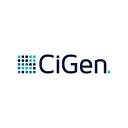RPA in 2019: How to Choose the Best Robotic Process Automation Tool for Your Company
Robotic process automation is a key factor in transforming your organisation, making it attuned to state-of-the art technological development, ready to gain a significant competitive advantage in today’s ever evolving market.
How does RPA do that? By allowing access to fully documented end-to-end robotic processes, by improving risk, compliance and audit management through reduction of errors and higher consistency and accuracy of reporting, or by enhancing the human experience with your business. The latter covers both customers’ experience, and staff satisfaction.
RPA brings more value to your workforce because it allows your employees to move from repetitive jobs to higher value ones. How can you take advantage of this to the highest degree? The one obvious answer, i.e., by implementing RPA software, requires the specification ‘by means of the best robotic process automation tool’. So let’s take a look at how to form a strategy for finding the right RPA vendor, who can provide an optimal tool for your business.
What is a Robotic Process Automation (RPA) tool?
It’s a product deploying software robots, which allow users to build workflows that the robots can follow. Functionally speaking, these bots are meant to automate the chores of your (human) employees. In this article, we use ‘RPA tool’ and ‘RPA software’ interchangeably.
Who are the technology providers that can offer you RPA tools?
These are the RPA vendors, which can be roughly split into 2 waves. The first wave of vendors was formed in the 2000s, being focused on programmable bot solutions. According to the Applied AI blog, two of the most successful companies in this sphere are UiPath and Blue Prism. The RPA vendors that make up the second wave are mainly concerned with enhancing automation with cognitive capabilities. They are the road openers for intelligent automation, aiming to provide RPA solutions in the form of bots that can also learn from humans’ actions.
How to choose the best Robotic Process Automation (RPA) tool for your company
In your search for the best RPA tool, the first thing on your to do list is to have a crystal-clear set of objectives that your company aims towards. Full knowledge of the status of your business processes (e.g., the extent to which they are rules based, repetitivity and manuality, access to readable inputs, and other questions to keep in mind), as well as a definite hierarchy of needs and goals, will help with selection
In other words, there is no such thing as an abstract, generic ‘best’; it’s more reasonable and more useful to think in terms of ‘best for attaining’ goal 1, goal 2, and so forth.
The criteria that single out RPA solutions are best understood as providing a checklist that can help you make an optimal choice of the best robotic process automation tool. The checklist allows you to assess the vendors’, as well as the software’s specific qualities, always in relation to the goals that you previously spelled out.
Criteria related to the RPA vendor
1. Vendor experience
The more versatile the vendor’s experience, the more likely it is that you can work together towards making the most out of your RPA tool. Best case scenario is that of a vendor having experience with other companies of similar size to yours, which operate in the same industry. The concrete gain of working with such a company resides in faster and less burdensome implementation. In the long run, this is likely to be conducive to a higher ROI.
2. Vendor support
This is related to the long lasting, constructive competition between IT and business teams when it comes to implementing robotic process automation. The kind of support you require from the vendor depends on the availability of your staff to use the software robots themselves. However, support from an active vendor community is always a plus, because it encourages innovation and continuous development of the product.
3. Vendor’s orientation to future-proof automation solutions
It’s here that the specification ‘RPA in 2019’ in the title is very significant. According to the figure below, a ‘cognitive AI roadmap’ ranks third in the top criteria that managers use to select an RPA provider. Natural language processing or image recognition are relevant examples of targets you might want your RPA vendor to aim for.
Criteria related to the RPA software
As you can see in the figure above, five out of six criteria that CEOs take into account are structural and functional features of the software.
1. Technical features of the software
This translates to security, screen scraping capabilities, scalability, cognitive capabilities. Since software robots work with private data, both data and access security are crucial. Scalability is a top benefit of using software robots, so the extent to which the robot can be easily replicated when the need arises is also critical.
The bots must be compatible with the particular software you use for visual data collection, so that they can use the data (e.g. the menus on the screen) for whatever task it is needed; this is why screen scraping is a relevant criterion. Bots’ ability to self-learn can speed up processes tremendously, by minimizing the amount of effort invested in deployment. Therefore the cognitive capabilities are highly relevant in 2019 and further.
2. Ease of implementation
This feature is highly dependent on how well the software can be integrated with the legacy systems that keep your business running. A smooth integration is a precondition for a brisk implementation, which results in as little organisational disruption as possible.
